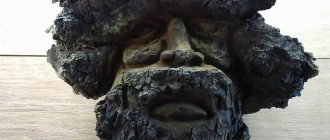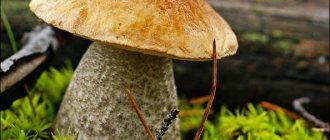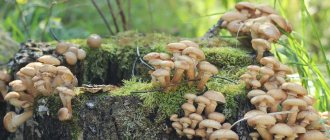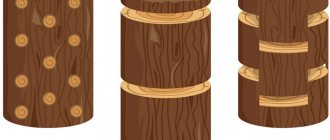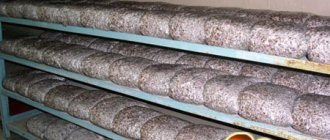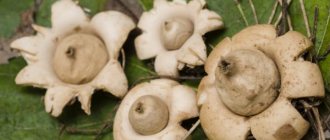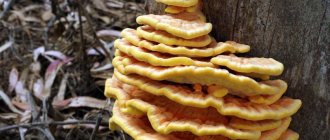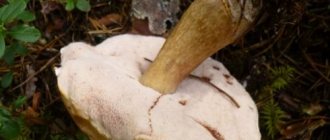Nature and the world around us are quite an interesting and complex mechanism. Huge forests are home to many amazing creatures, whose existence is driven by the need for cohabitation. After all, together it is easier for us to exist and develop. This phenomenon can be observed everywhere. From people living in huge cities to small mushrooms living next to trees. Today we will talk about the relationship between a small controversial raster and a mighty giant, which is home to more than one living creature. Let's find out how the life of a mushroom and a tree are connected and what contributes to this cohabitation.
Mushrooms are separate kingdoms of living nature because they combine the characteristics of plants and animals. There are such combinations on our board, but this group is the most common. Mushrooms have a huge variety of species and subspecies, which makes their kingdom simply huge.
Do you think mushrooms have long been “independent”? The answer is negative. They began to be identified as a separate biological group only at the end of the twentieth century due to the fact that they combine the characteristics of plants and animals. Mushrooms are actively used by humans in their farming. In medicine they are used to create antibiotics, the food industry uses them for food preservation and much more. Also, let's not forget that we simply eat them, and some people collect them in the forest in the fall for pleasure and a walk. The main purpose of small organisms is to decompose various elements in the ground, creating nutritious soil that helps other plants grow. You will find out how they do it today.
Next we will talk more about mushrooms and how they are related to trees. Will you understand what such cooperation leads to - is it beneficial and harmful to the forest?
What is symbiosis?
In the scientific interpretation, it is a close community of organisms belonging to different species. There are various forms of symbiosis. It all depends on the nature of the relationship between the species and the utility of the relationship between them. Symbionts are organisms that participate in relationships with others, just like mushrooms and trees are in relation to each other. There are other types of successful symbiosis in nature, from stomach and intestinal bacteria to plants. There are several types of symbiosis:
- parasitism - one organism lives at the expense of another, harming the second. This can happen if the pest is inside the affected cell or on its surface;
- mutualism is a symbiosis in a state of harmony, caring for each other, and there is a close connection between them;
- commensalism - when one participant brings benefit, and the second does not harm, but does not help either. An example of such a symbiosis is a spider weaving its webs on various plants;
- amensalism is a form of being in which one thing oppresses or destroys the other. Walnuts kill plants around them and then eat the remains;
- Synnencrosis is a rare type of interaction; it is a symbiosis that leads to the destruction of both sides.
Science has proven that the desire for interaction is more active in fungi with well-formed subsoil species. Mycorrhizal, or mushroom-root, appears under the influence of symbiosis with a tree. Entering into this contact is beneficial for both. For example, boletus mycelium penetrates the rhizomes of trees and takes up space between them. As a result of interaction with this mycelium, mycorrhiza is formed. By working with mycelium, the tree gains the ability to produce natural antibiotics; these substances protect against bacterial diseases. The mycelium provides moisture accumulated by tree roots, and in return it receives sugar from the tree.
Symbiosis of fungi and insects
Mushrooms also enter into symbiosis with insects. An interesting association is the connection between some types of molds and leaf-cutter ants. These ants specifically breed mushrooms in their homes. In separate chambers of the anthill, these insects create entire plantations of these mushrooms. They specially prepare the soil on this plantation: they bring in pieces of leaves, crush them, “fertilize” them with their feces and the feces of caterpillars, which they specially keep in the neighboring chambers of the anthill, and only then introduce the smallest fungal hyphae into this substrate. It has been established that ants breed only mushrooms of certain genera and species that are not found anywhere in nature except anthills (mainly fungi of the genera Fusarium and Hypomyces), and each type of ant breeds certain types of mushrooms.
Ants not only create a mushroom plantation, but also actively care for it: they fertilize, prune and weed. They cut off the emerging fruiting bodies, preventing them from developing. In addition, ants bite off the ends of fungal hyphae, as a result of which proteins accumulate at the ends of the bitten off hyphae, forming nodules resembling fruiting bodies, which the ants then feed on and feed their babies. In addition, when the hyphae are trimmed, the mycelium of the fungi begins to grow faster.
“Weeding” is as follows: if mushrooms of other species appear on the plantation, the ants immediately remove them.
It is interesting that when creating a new anthill, the future queen, after the nuptial flight, flies to a new place, begins to dig tunnels for the home of her future family, and creates a mushroom plantation in one of the chambers. She takes mushroom hyphae from an old anthill before flight, placing them in a special suboral pouch.
Termites are also bred in similar plantations. In addition to ants and termites, bark beetles, boring insects, some types of flies and wasps, and even mosquitoes are involved in “mushroom farming.”
How did the different species mate?
This union is very interesting. The roots of the plant secrete a special hormone that awakens fungal spores. Subsequently, these spores form thin threads, intertwine and often bloom on plants. This is called mycorrhiza. When the fungus just begins to settle in the roots, the tree resists it. This is a common reaction to such events. The tree thinks it is a virus and tries to get rid of it. But plants with spores overcome the immune system in ways unknown to science. The tree must accept new neighbors and live. For normal cohabitation, the tree needs to rebuild its metabolism so that the new neighbor does not suck out all the juice.
Protective substances appear on the roots and other parts of the plant, but do not act on fungi, but on harmful insects and microorganisms.
The remaining threads grow underground. They don't absorb solar energy like plants, which get it through their leaves, but need to look underground for nutrients. That is, they are in the soil. The tip of the mycelium, several micrometers thick, cuts into the rock and slowly dissolves with digestive acid. A liter of forest soil contains a million fungal threads. Over the course of a year, they create pores 150 meters long, transforming hard rocks into mineral-rich soil. If the earth had not been processed in this way, then about 385 million years ago plants would not have appeared at all. But the mushrooms themselves cannot exist without neighbors. They give them sugar formed on the leaves in the light, and their own rotten waste.
What mushrooms form mycorrhiza - types
Fungal roots in biology are divided into four types:
- Endotrophic is characterized by the penetration of the fungal hypha into the cells of the root system, where it remains in the form of balls or branches. Inherent in imperfect fungi that enter into symbiosis with herbaceous plants and shrubs.
- Ectotrophic is formed due to the Hartig network - fungal hyphae occupying intercellular spaces in young roots. It is characteristic of trees and shrubs, with which, as a rule, a strictly defined fungus enters into a symbiotic relationship.
- Ectoendotrophic involves the penetration of hyphae into both cells and intercellular spaces of the rhizome of herbs.
- Ericoid mycorrhiza is found in crops of the Heather family.
Depending on the degree of penetration of the fungal mycelium into the root cells, several types of fungal roots are distinguished.
Most plants are capable of entering into symbiosis with myceliums (dicots, monocots, gymnosperms, spores), but not all fungi can become mycorrhiza-formers. The most common are chanterelles, boletus mushrooms, honey mushrooms, fly agaric mushrooms, boletus mushrooms, etc. The record holder among symbionts is the porcini mushroom : it enters into cohabitation with two dozen coniferous and deciduous trees and shrubs. Some representatives form a fungal root only with a certain “neighbor,” which is how they get their name (for example, boletus grows only next to aspen).
There are fungi that do not form mycorrhiza:
- saprophytes, capable of independently obtaining carbohydrates from the remains of plants and animals;
- symbionts leading a parasitic lifestyle.
Why are mycelial meshes needed?
Mycelium nets, or simply mycelium, as it is commonly called, for most people is simply called mycelium, consisting of the finest intertwined threads. These filamentous mycelia form special organs that help them gain a foothold in a habitable environment. Such a medium can be the soil surface, the tree itself or its roots. Mycelium performs many very important tasks:
- processing cellulose with enzymes to produce natural fertilizers;
- adaptation to external conditions;
- synthesis of spores and their preservation.
The mycelium in appearance resembles white fluff or a network, as it is represented by the finest threads. These threads have many branches called hyphae. Their thickness is 1.5-10 microns. To understand this size, you need to say that 1 micron is equal to 0.001 mm. The mycelium set consists of bundles that resemble the roots of ordinary plants. They make it possible to adhere to a variety of surfaces, from soft soil to hard wood. In mycorrhiza, other threads enriched with nutritional elements are formed. They are black, their purpose is defense. They allow the mycelium to survive and withstand low temperatures. There is a certain cycle of development and mycelium:
- it all starts with small spores that form the primary type of mycelium;
- crossing cells from a pair of spores contributes to the appearance of a secondary one;
- then comes the secondary growth phase;
- after the vegetative mycelial networks have matured, the cell begins to divide very actively, and when this process reaches its maximum activity, the production of the fruiting body begins;
- after the last change it becomes tertiary.
There is another classification:
- completely submerged is under the nutrient substrate. That is, it is hidden underneath;
- air is connected only with the environment.
And one more classification:
- coenotic or noncellular. There are no side partitions between the cells. It is a single cell with a large number of nuclei inside;
- septate or cellular. Cells are divided into transverse compartments, as a result of which each cell can contain a certain number of nuclei.
Myceliums live on stumps, old rhizomes, tree bark or inside the trunk. This helps to understand which mushrooms are associated with trees, which we will talk about next.
Role in the life of a plant
Mycorrhiza plays a vital role for full-fledged plant life - thanks to it, mineral salts, water, vitamins and enzymes are delivered to the roots. The root system becomes able to absorb essential substances such as potassium, phosphorus and other stimulants. However, the mycelium not only supplies the roots with everything they need in abundance, it also correctly doses the supply of all these elements.
Fungi form mycorrhiza with the roots, and because of this, plants grow better, bloom more actively and bear more fruit. Moreover, the mycelium guarantees resistance to changes in weather conditions, drought, abundant moisture, sudden cold snaps, and also protects the host from certain diseases, for example, late blight. Mycorrhiza breaks down organic and inorganic compounds, digests them and, thus, cleanses the soil of excess salts, and also prevents soil acidification.
Which ones are connected?
Considering the method of nutrition, we can distinguish the following three groups:
- saprotrophs eat the remains of dead plants. It can absorb rotting leaves, tree branches and more. They can be called mushroom scavengers;
- symbiotes can obtain nutrients not only from dead plants, but also through tree roots. They coexist with trees and form their own on their roots. However, not everyone can create such a connection. For example, boletus grows only under birch trees, etc.;
- Parasites live off the organisms in which they live. They cause various diseases leading to the death of the infected person.
Symbiotes coexist with trees. Mycelium has a number of benefits for both of them. By using suitable mycelium, the tree can increase water and nutrient absorption, allowing for faster enrichment. In addition, fungus-friendly plants contain plenty of nitrogen and phosphorus, which the tree needs to survive. In addition, mycelium can grow outside the roots of its partner tree and associate with other root systems and mycelium. A network is then created in which nutrients are exchanged between many organisms. Trees share sugars with fungi needed for normal development and instead filter the soil from heavy metals that destroy the tree.
Now you know how the life of a mushroom and a tree are connected. This is a very interesting and exciting process.
Lichens: what is the symbiosis of fungi and algae?
In the photo Lichen
Another example of the symbiosis of lower fungi with organisms of other species is lichens, which are a union of fungi (mainly ascomycetes) with microscopic algae. What is the symbiosis of fungi and algae, and how does such “cooperation” occur?
Until the middle of the 19th century, it was believed that lichens were separate organisms, but in 1867, Russian botanists A. S. Famintsyn and O. V. Baranetsky established that lichens are not separate organisms, but a community of fungi and algae. Both symbionts benefit from this union. Algae, with the help of chlorophyll, synthesize organic substances (sugars), which the mycelium feeds on, and the mycelium supplies the algae with water and minerals, which it sucks from the substrate, and also protects them from drying out.
Thanks to the symbiosis of fungus and algae, lichens live in places where neither fungi nor algae can exist separately. They inhabit hot deserts, high mountains and harsh northern regions.
Lichens are even more mysterious creatures of nature than mushrooms. They change all the functions that are inherent in separately living fungi and algae. All vital processes in them proceed very slowly, they grow slowly (from 0.0004 to several mm per year), and also age slowly. These unusual creatures are distinguished by a very long life expectancy - scientists suggest that the age of one of the lichens in Antarctica exceeds 10 thousand years, and the age of the most common lichens that are found everywhere is at least 50-100 years.
Thanks to the collaboration of fungi and algae, lichens are much more resilient than mosses. They can live on substrates on which no other organism on our planet can exist. They are found on stone, metal, bones, glass and many other substrates.
Lichens still continue to amaze scientists. They contain substances that no longer exist in nature and which became known to people only thanks to lichens (some organic acids and alcohols, carbohydrates, antibiotics, etc.). The composition of lichens, formed by the symbiosis of fungi and algae, also includes tannins, pectins, amino acids, enzymes, vitamins and many other compounds. They accumulate various metals. Of the more than 300 compounds contained in lichens, at least 80 of them are found nowhere else in the living world of the Earth. Every year, scientists find in them more and more new substances that are not found in any other living organisms. Currently, more than 20 thousand species of lichens are already known, and every year scientists discover several dozen more new species of these organisms.
Features and properties of fungal mycelium (mycelium):
The mycelium of the fungus (mycelium) spreads over hundreds of meters around the plant, and its mass sometimes reaches several tons. In one cubic centimeter of soil surrounding the roots, the total length of fungal threads (hyphae) ranges from 20 to 40 meters.
Mushrooms have a powerful enzymatic apparatus capable of processing (breaking down and digesting) a wide variety of nutrients in the soil, both organic (humates, etc.) and inorganic origin (potassium, phosphorus, etc. minerals), into the form required and assimilated by plants. It is known that minerals are contained in huge quantities in the soil, but the plants themselves cannot extract them and therefore experience starvation.
Fungal hyphae are more than an order of magnitude thinner than root hairs and therefore are able to penetrate the finest pores of soil minerals, subsequently breaking them down into the necessary components.
Benefits from agriculture grown using mycorrhiza:
– plants contain their own vitamins and minerals,
– higher nutritional value of products,
– growing food the way nature does it,
– longer shelf life, less waste,
– healthier plants – healthier people,
– anyone can participate after receiving the necessary education,
– we know for sure that what goes into food goes into us.
Mycorrhization as a technology of the future
In connection with this state of affairs, agronomists have proposed solving the problem by artificially introducing mycelium particles into the soil to improve the growth and development of plants. Now these technologies are still being tested and are not widely distributed, but the beginning of a grandiose project has already been made, and research institutes in many countries are already actively developing this colossal idea.
Previously, the key to soil fertility was the high presence of humus in it, but now scientists are focusing on the content of a special protein in the soil - glomalin, which accumulates in it precisely thanks to mycorrhizal fungi. And without it, as modern science has found out, the existence of the plant world is generally impossible.
In addition, fungal hyphae improve the structure of the top layer of soil, enhance aeration, and also help strengthen the plant’s defense system, which prevents its infection by pathogenic bacteria and increases resistance to sudden changes in weather conditions.
The use of mycorrhizal grafting provides an increase in yield, and at the same time reduces the cost of fertilizers and reduces the amount of required watering. In dry times, mycorrhiza protects the root system from drying out, and during periods of high humidity, on the contrary, it retains water, preventing the roots from getting wet.
In soils that are very poor by definition (on the site of former quarries, industrial areas and other damaged lands), the mycorrhizal system helps restore fertility and protect the plant body from toxic inclusions - salts of heavy metals and chemicals. From a biological point of view, this technique will help revive soil in waste areas contaminated with various harmful substances.
Types of interactions
Microbiology gives several classifications of bacterial symbioses:
- According to incoming components (macro- and microsymbiosis).
- According to the location of the components relative to each other: endosymbiosis (intraorganismal) and exosymbiosis (external arrangement of interacting organisms).
- According to the nature of the relationships into which organisms enter (mutually beneficial mutualistic, suppressive parasitism, indifferent neutralism).
- Depending on each other (obligate - partners cannot exist outside of symbiosis, facultative - each symbiont can live a separate life).
Commensalism is a separate issue. This is a connection between a bacterium and another organism in which one of the participants benefits, while the other is indifferent to the established connection and its products.
These properties of symbioses cannot be called a stable characteristic, since under certain conditions the type of cohabitation may change. Thus, mutualistic cohabitation can turn into parasitism or neutralism and vice versa.
